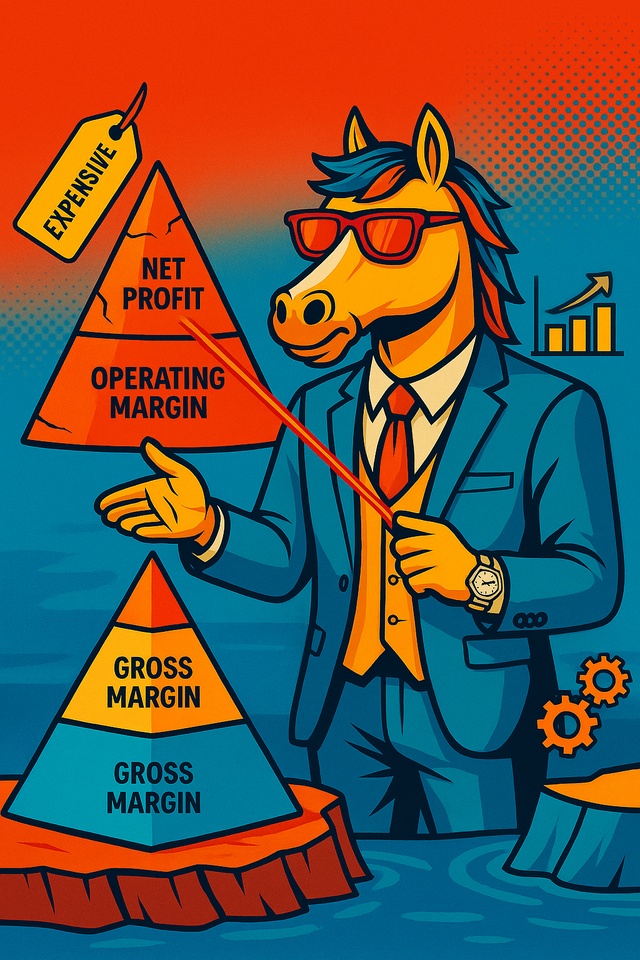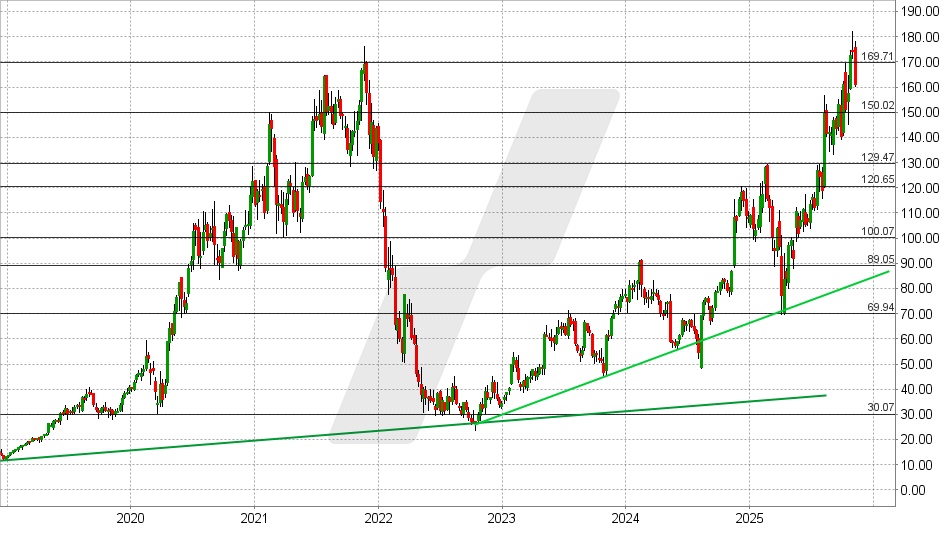Reading time: approx. 7 minutes
Many of my recent posts have dealt with various ratios that help in the valuation of companies - EV/EBITDA, free cash flow yield, debt/EBITDA, ROE vs. ROIC or, most recently, the logic of margins. The price/sales ratio (P/S ratio) fits seamlessly into this series, but is also one of the most frequently misunderstood figures. It initially appears to be a simple measure: market capitalization divided by sales. It is precisely this simplicity that makes the KUV attractive, but also dangerous. Turnover is robust, easy to measure and rarely distorted - in contrast to profits, which are strongly influenced by investments and accounting logic in the early stages. However, turnover initially says nothing about how profitable a business model can be in the long term.
The KUV is particularly valuable in business models that are still in the development phase. Companies invest heavily in sales, technology, logistics or infrastructure in order to gain market share. Profits are often negative or hardly meaningful, while turnover provides the most stable signal. This is why the P/E ratio serves as a valuation anchor as long as cash flows and profits are distorted. The logic is understandable: If profit ratios don't work, the focus shifts to the top line of the P&L. But this is exactly where the real analysis begins - because turnover alone does not create value. Only the ability to convert this turnover into profitable cash flow determines the viability of a KUV.
To read the KUV in a meaningful way, you need to understand the margin structure of a company. Gross margin is often the best leading indicator of scale. A model with an 80% gross margin generally has more potential to convert sales into operating income than a model with a 25% gross margin. Software, platform models and payment architectures are good examples of this. They can carry high KUVs because the basic logic - high contribution margins, low marginal costs, strong scaling - leads to attractive margins in the long term. Companies from industry, trade or cyclical sectors are naturally significantly lower because the value added per euro of sales is lower. A KUV of 10× can be rational for a software model - it would be excessive for a consumer producer.
The Rule of 40 - sales growth plus operating margin - helps to classify this profitability journey. Companies with high growth rates but permanently negative operating margins have to show at some point that economies of scale actually work. Models that sustainably exceed the Rule of 40 can justify high P/E ratios, while companies below 20 hardly provide a basis for ambitious multiples. Added to this is capital efficiency: ROIC is the common thread that shows whether the business really generates value. Even a high P/E ratio can seem reasonable if a company is demonstrably able to generate an above-average return on invested capital.
The capital structure is just as important. The KUV ignores debt. A company with a KUV of 8 and high debt can be significantly riskier than a company with a KUV of 12 but a strong balance sheet. In phases of rising interest rates, this blind spot leads to harsh valuation reactions because high debt places a greater burden on future cash flows. In such cases, EV/Sales is often the more robust measure because it takes the actual capital structure into account.
Practical examples make these mechanics tangible. $SHOP (-0,99%) (Shopify) showed for years how a highly scalable model with a strong gross margin can justify double-digit P/Es. The market did not pay for the present, but for the expected profitability. The same was true for $SNOW (-1,51%) (Snowflake) with partly over 30× sales - a reflection of high gross margins, recurring revenues and strong lock-in effects. $AMZN (-1,4%) (Amazon) used the P/E ratio as a key valuation indicator in the early 2000s because profits were hardly relevant. The true value only became apparent when AWS emerged and released enormous margins. Contrary examples such as $KRNT (-0,42%) (Kornit Digital) show that even solid revenue growth is worth little if margins, ROIC and market position erode. In such a case, a "favorable" P/E ratio is only superficially attractive.
A look at typical valuation bands helps with classification. Valuation levels rarely arise in isolation - they are the result of sector logic, the competitive situation and the interest rate environment. A condensed overview:
SaaS & software (high scalability, 70-90% gross margin)
- typical KUV: 8-15×
- Market leader / hypergrowth: 15-25×
- Mature models: 4-8×
Platform models & fintech (network effects, lock-in, recurring revenues)
- Typical KUV: 5-12×
- Market-leading platforms: up to 15×
Semiconductor ecosystem & infrastructure software
- typical KUV: 4-10×
- with very high margin / CapEx leverage: 10-15×
Consumer goods & branded companies
- typical P/E ratio: 1-3×
- Premium brands: 3-5×
Industry, mechanical engineering, automotive suppliers
- typical KUV: 0.5-2×
- Structurally strong models: up to 3×
Trade & logistics
- typical KUV: 0.2-1×
However, this overview in particular requires a classification that is neglected in many discussions: valuation bands are not static laws of nature, but snapshots across interest rate phases and market regimes. The sometimes high multiples of the last decade were created in an environment of extremely low interest rates and high liquidity. In a normal or high interest rate environment, fair valuation bands are traditionally significantly lower - especially for high-growth business models that have yet to prove their future earnings. In such phases, the market pays less for the distant future and demands visible profitability more quickly. Many of the high ranges that have stubbornly persisted in investor expectations are based on phases of euphoria, which should not be interpreted as the norm.
This perspective also explains the harsh revaluation of tech and platform companies after 2021. With rising interest rates, P/E ratios of 20× or 30× are no longer an expression of optimistic growth fantasies, but an expression of a valuation regime that is hardly transferable. A company can have the same growth, the same margin and the same market position - and still be valued half as highly because the interest rate regime is different. The P/E ratio thus reacts indirectly to the macroeconomic environment, although the ratio itself does not reflect the interest rate structure at all.
This makes it clear that the KUV is much more than a simple valuation figure. It is an indicator of the market's expectations for the future - and of the willingness to pay for this future. The real message only emerges from the interplay between margin structure, growth quality, ROIC, capital structure and interest rate environment. Turnover alone is an empty shell. Value is only created where companies can generate profitable, capital-efficient cash flow from this turnover. And it is precisely this that ultimately determines whether a high or low P/E ratio is justified.


















